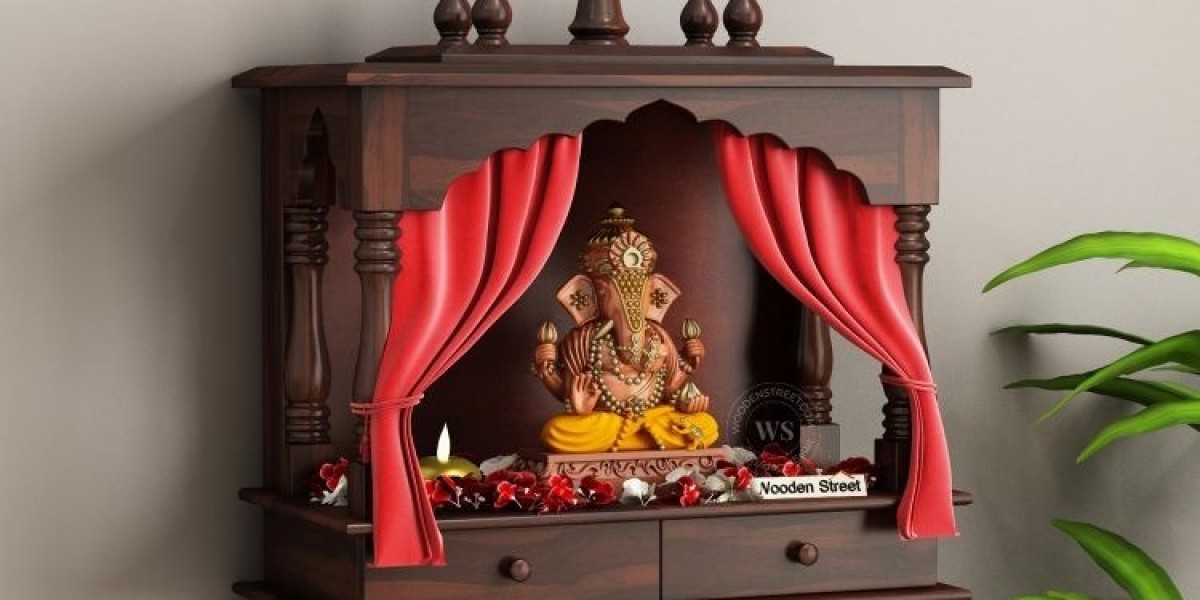A home temple, or mandir, is a sacred space where peace and spirituality flourish. In Indian homes, having a dedicated pooja space is more than just a tradition—it's a deeply rooted practice that brings divine energy, positivity, and harmony into the household. However, to fully harness these benefits, it's crucial to select a mandir design that aligns with Vastu Shastra—the ancient Indian science of architecture and space alignment.
In this guide, we’ll help you understand how to choose the right mandir design for your home Vastu, while also exploring the ideal direction, material, placement, and aesthetic considerations that make your home temple truly divine.
1. Importance of Vastu for Mandir Placement
Vastu Shastra emphasizes the proper alignment of energies to create a positive flow in the home. A mandir that is placed according to Vastu brings peace, prosperity, and good health to the residents. Incorrect placement can lead to restlessness or imbalance in the house.
Vastu-Approved Direction for Mandir:
Northeast (Ishan Kona) is considered the most auspicious direction to place your home temple.
If Northeast isn’t possible, East or North directions are also favorable.
Avoid placing the mandir in the South or Southwest directions, as these directions are considered inauspicious for spiritual practices.
2. Selecting the Right Mandir Design Based on Vastu
Once you’ve identified the ideal direction, the next step is to select a mandir design that complements the Vastu principles. Here’s how to make the best choice:
a) Material Matters: Choose Wood Over Metal or Glass
According to Vastu, wooden temples are ideal for home use, especially when crafted from Sheesham (Indian Rosewood) or Teak. Wood symbolizes earthiness and stability, promoting calm and grounding energies.
Avoid glass or metal temples for daily pooja rituals, as they may not resonate well with spiritual vibrations.
b) Design with Domes and Doors
A mandir with a dome (shikhar) and doors is recommended as per Vastu. The dome signifies divinity, and doors help protect the sanctity of the space when not in use. If you prefer open mandirs, ensure they are placed in less busy or quieter corners of the house.
c) Mandir with Storage
Many wooden temple designs come with built-in drawers or shelves to store pooja essentials. This not only adds functionality but also helps maintain the sacredness of the space by keeping it clean and organized, another important Vastu rule.
3. Ideal Placement of Idols and Pictures
Choosing the right mandir design also involves understanding how and where to place your idols or pictures of deities.
Place the idols so they face East or West, never South.
Ensure the idols are not directly touching the wall, keeping at least a few inches of space behind.
Idols should be placed at eye level, typically 32-36 inches above the floor.
Avoid placing broken or chipped idols inside the mandir.
These rules apply to all types of home temples—whether they are wall-mounted mandirs, free-standing pooja units, or corner temples.
4. Size and Shape of the Mandir
The size of your mandir should be proportional to the space available. An oversized mandir in a small room may disrupt the energy flow, while a tiny mandir in a large space might feel insignificant.
Choose from:
Wall-Mounted Mandirs – Great for small apartments or modern homes.
Freestanding Wooden Temples – Ideal for larger living rooms or separate pooja rooms.
Corner Temples – Perfect for unused corners of the house, especially in the northeast.
Avoid irregular shapes. Square or rectangular temples are best, as they align well with Vastu principles.
5. Mandir Height and Lighting as per Vastu
The height of the mandir should be such that when you sit or stand in front of it, your posture remains comfortable and respectful.
Lighting Tips:
Use soft, warm lighting like diya lamps or yellow LED lights.
Avoid red or neon-colored lights.
Ensure there’s adequate ventilation and natural light near the mandir if possible.
WoodenStreet offers home temple designs that come with built-in lighting, domes, and drawers—perfect for both modern and traditional homes, and aligned with Vastu tips.
6. Don’ts to Keep in Mind While Choosing a Home Temple
While selecting the right mandir design, ensure you avoid these Vastu-defying mistakes:
Don’t place the mandir in the bedroom, bathroom, or under staircases.
Never store unrelated items or clutter inside the pooja unit.
Don’t hang calendars or unrelated pictures around the mandir area.
Avoid black or dark-colored mandirs; go for white, brown, or gold finishes that invoke purity and light.
7. Personalization & Spiritual Décor Tips
Once you've selected the right mandir as per Vastu, you can further personalize your sacred corner:
Add bells, pooja mats, incense holders, and flower garlands.
Keep a small water vessel or copper kalash near the mandir.
Use marble or wood flooring underneath to enhance the spiritual vibe.
WoodenStreet offers a variety of customizable home temples that allow you to select wood type, polish finish, dome designs, and more—helping you stick to Vastu while reflecting your taste.
Final Thoughts
Your mandir is more than just a furniture piece—it's a divine corner where energy flows and prayers resonate. By choosing a mandir design that follows Vastu Shastra, you can ensure peace, prosperity, and positivity in your living space.
Whether you're looking for a wall-mounted mandir, a freestanding pooja unit, or a customizable wooden temple, platforms like WoodenStreet offer versatile options that cater to every home size, budget, and spiritual need.
Let your home reflect not just your style, but also your soul.








